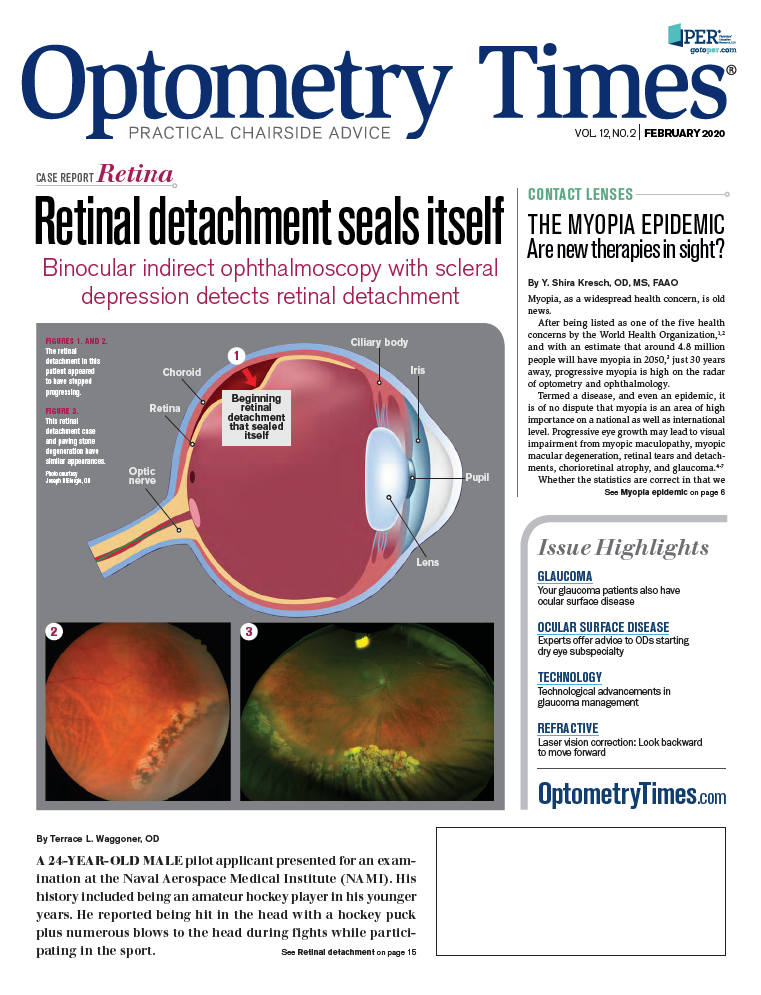A forecast of the global ocular allergy market
A new age of highly customized therapeutic care is coming to the allergy treatment market.


The eye allergy treatment market is expected to grow rapidly in the near future. Sources predict an annual growth rate between 4.14 and 5.3 percent with a yield of approximately $707 million to $2 billion across a timeline of 2023 to 2028. This creates an opportunity for industry and clinicians to develop research on efficient drug delivery and adapt to a new age of highly customized therapeutic care.
After writing the allergy department for the past five years, I have come to appreciate the subtle nuances within this sphere of influence. Invariably, optometrists (ODs) tend to get bogged down in the trenches of their busy schedules despite realizing there is no shortage of interesting scientific discoveries and pearls to glean from the journals and our clinical experience. Switching gears though, it would be prudent to take a step back for a moment to appreciate what the economic Magic 8-Ball might portend for trend analysis.
Related: Topical immunomodulators can help chronic ocular allergic disease
With a continually increasing incidence over the past 40 years in the United States (US) affecting over 20 percent of the population as the sixth leading cause of chronic illness, ocular symptoms have begun to make a lasting impact in this narrative.1
Bielory et al broke down the experience further categorically into mild (25 percent), moderate (53 percent), and severe (22 percent).2,3 In US households, 32 percent of children exhibit ocular allergy symptoms.4 While many readers may hail from the Americas, the expansion of the disease state extends globally with many EU (European Union) nations registering increased prevalence, including Germany along with emerging markets in the Middle East and Southeast Asia.5-10
When taking a deeper dive, significant market dynamics revolve in the background. The mechanisms of action are parsed out in the three areas, including drivers, restraints, and opportunities.
Related: A look at the latest and upcoming pharmaceutical patents
Drivers are defined as motivating factors such as government funding, prevalence of the disease state, or how rich the pipeline might be for the future. Although world-class institutions such as Ora (Andover, MA) are working feverishly with industry partners to develop new products, there are restraints. As experts in the field, optometrists assume patients have been exposed to certain treatments to manage the condition. Unfortunately, this is simply not the truth. Consistently throughout multiple source analyses, there is a larger volume by usage of artificial tears and ocular decongestants followed by allergy eye drops.5-10
Related: How the Japanese treat allergic conjunctivitis
While this might be disheartening to hear, in many respects, it is an opportunity to both industry and clinicians. By listening to the marketplace, mega trends have begun to occur and will continue to be explored in development research with respect to efficient drug delivery. Examples include nanotechnology (soon to be picotechnology) and unique physical chemistry to increase ocular tissue penetration. These innovations will need to meet or exceed the thirst of the public for on-demand care whether it be a genetic therapy, a specialized design drop, nasal spray, or a sublingual method.
Forecast for next decade
So, what is the forecast for next decade?
The distilled answer is significant acceleration of growth year on year. Based on multiple source analyses, the compound annual growth rate is between 4.14 and 5.3 percent with a yield of approximately $707 million to $2 billion across a timeline of 2023 to 2028.5-10
Related: How climate change affects allergies
As expected, North America will lead the way with approximate sales growth of 36 percent.6
Conversely, emerging markets will continue to expand their influence due to shifting environmental factors such as pollution from industrial modernization along with the ever-present global warming trend. While perennial and seasonal allergic conjunctivitis will continue to reign supreme for the foreseeable future, vernal conjunctivitis will be the second lucrative growth segment, especially in the male population.5
Related: Propolis may help treat ocular disease
What happens next?
As we all adapt to mainstream self-driving/autonomous vehicles, quantum artificial intelligence (AI) advancements, and scroll phones in the 2020s, doctors will need to be just as agile in the evolving business environment.
The world is changing rapidly beyond our comprehension in a myriad of ways. In essence, the allergy forecasting exercise we have walked through together is a microcosm of what is to come for the rest of medicine. It will require us all to have keen focus and flexibility in how we approach a new age of highly customized therapeutic care.
More by Dr. Cooper: Lyme disease: The 45-year silent epidemic
References:
1. Wüthrich B, Brignoli R, Canevascini M, Gerber, M. Epidemiological survey in hay fever patients: symptom prevalence and severity and influence on patient management. Schweiz Med Wochenschr. 1998;128(5):139-143.
2. Bielory L. Allergic and immunologic disorders of the eye. Part II: ocular allergy. J Allergy Clin Immunol. 2000;106(6):1019-1032.
3. Bielory L, Friedlaender, MH. Allergic conjunctivitis. Immunol Allergy Clin North Am. 2008;28(1):43-58.
4. Marrache F, Brunet D, Frandeboeuf J, et al. The role of ocular manifestations in childhood allergy syndromes. Rev Fr Allergol Immunol Clin. 1978;18:151-155.
5. Global Eye Allergy Market Research Report: Forecast to 2025. Custom Preparation by Market Research Future. New York; 2020.
6. Global Eye Allergy Therapeutics Market: 2019 to 2023. Custom Preparation by Technavio. Chicago; 2020.
7. Wood L. Global Eye Allergy Therapeutics Market Report 2019-2023 Featuring Akorn, Allergan, Bausch Health Companies, Novartis, & Santen Pharmaceutical - ResearchAndMarkets.com [Internet]. Global Eye Allergy Therapeutics Market Report 2019-2023. Business Wire; 2019. Available at: https://www.businesswire.com/news/home/20190528005667/en/Global-Eye-Allergy-Therapeutics-Market-Report-2019-2023. Accessed 1/1/2020.
8. Eye Allergy Treatment Market Size [Internet]. GlobeNewswire News Room. Market Research Future; 2019 [cited 2020Jan1]. Available from: https://www.globenewswire.com/news-release/2019/07/26/1892255/0/en/Eye-Allergy-Treatment-Market-Size-is-Expected-to-Reach-USD-2342-16-Million-With-a-CAGR-of-5-3-By-2023-Market-Research-Future.html. Accessed 1/1/2020.
9. Allergy Relieving Eye Drops Market: Growth, Trends, and Forecast [Internet]. Market Research - Consulting, Reports, Advisory, Sizing. Mordor Intelligence; 2020. Available at: https://www.mordorintelligence.com/industry-reports/allergy-relieving-eye-drops. Accessed 1/15/2020.
10. Can a Strong Pipeline Drive Allergic Conjunctivitis Therapy Market Ahead?: DelveInsight [Internet]. DelveInsight Business Research. Delveinsight; 2019 [cited 2020Jan14]. Available at: https://www.delveinsight.com/blog/global-allergic-conjunctivitis-therapy-market/. Accessed 1/14/2020.

Newsletter
Want more insights like this? Subscribe to Optometry Times and get clinical pearls and practice tips delivered straight to your inbox.





.png&w=3840&q=75)























